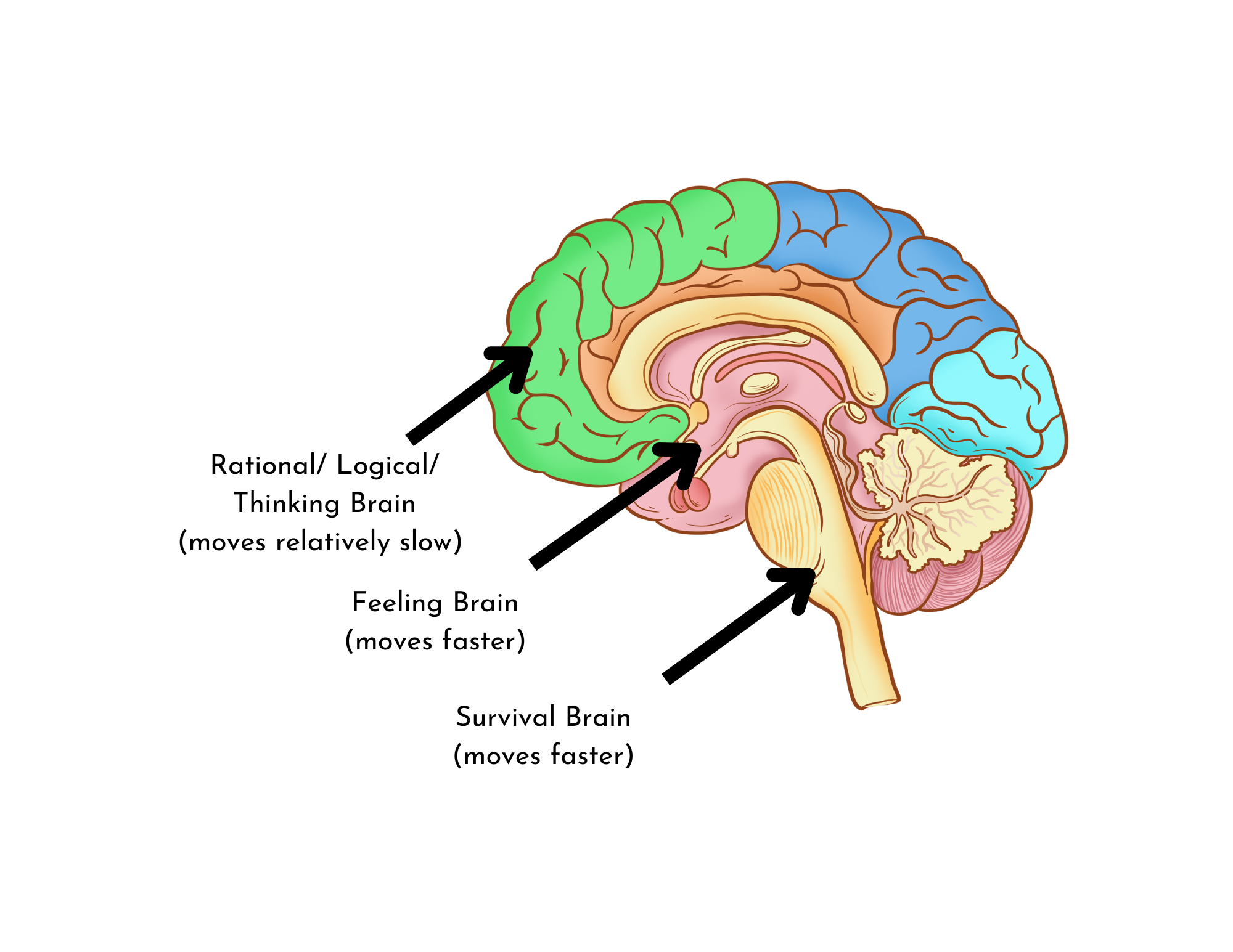What is somatic therapy and why does embodiment matter?
For most of my life, one of the things that is able to calm me the most quickly (and most reliably) is the feeling of someone I love putting a firm and comforting hand on one of my shoulders. Even when my affirmations, reminder, good thoughts, and common sense have fled from me and I am in a place of feeling totally anxious, a good hand on the shoulder will help me slow down my breathing, come back to the present, and start to get back to my center.
This was my earliest, most intuitive, understanding of how important the body is in experiencing mental and emotional wellbeing. By seeing to the needs of my body (the need for a comforting gesture) I could find enough calm to open up space all those other things (affirmations, reminders, good thoughts). But if I ignored what was going on in my body I could get really stuck in a place of anxiety.
Maybe you have something similar. For you it could be that you always find some calm or comfort in
A warm bath or long shower
Taking a walk
Smelling your favorite candle
An extended hug from someone you are close to
A deep stretch
Or something else.
The abilities of our bodies to become anxious or dysregulated is powerful and our bodies’ ability to regulate, find calm, and create a sense of wellbeing is also powerful.
Trying to release painful thoughts or feelings, change our thoughts, access wisdom, make an intentional choice, or allow pleasant feelings without addressing the needs of our nervous systems is like trying to pushing a boulder uphill with both hands tied behind our backs, it is often a lot of force, frustration, and strain. That is because we are fighting the way our brains are wired.
When we disconnect our thoughts and feelings from what we are experiencing in our bodies (disembody them), we lose a powerful ally in creating wellbeing, finding calm, and making space.
Your rational/ thinking mind moves relatively slow in comparison to the other parts of your brain so when something stressful happens and your nervous systems is feeling threatened, other parts of the brain tend to take over.
Stressful or activating things happen and even though most of the time we are not actually in danger of immediate harm our heart rate goes up, our muscles tense up, we get a little sweaty maybe, out stomach gets fluttery or we feel like we’ve turned to stone, our limbs feel heavy, we feel exhausted.
If there is no danger why on earth is our body responding like this?
Your brain can be broken down into three parts: your thinking/ rational brain, your feeling brain, and your survival brain. I will go more in-depth on these parts in other posts but it is important to understand all these parts have a valuable purpose.
Your thinking/ rational brain is often the part that you want to be running the show when something stressful happens. It sorts through options, does a realistic evaluation of what is happening, can connect with affirmations and positive reminders, and can proceed step by step to get the situation taken care of or to accept that this situation isn’t an emergency.
Unfortunately, your thinking/ rational brain moves relatively slowly compared to the other parts of your mind. By the time it is doing it’s assessment work and sorting through things your feeling brain and survival brain have a major head start. Your survival brain is wired to respond to things in your environment almost automatically. This part of your brain is not focused on rational problem solving but keeping you alive. So when it becomes aware of a stressful thing (whether that is a forgotten text or a last minute request from a colleague), it prepares you to respond in any way that you might need to- running, jumping, fighting, hiding, freezing up and disappearing, whatever you might need to do. Your body, your heart rate, your breathing, your muscle tension is all prepared for an emergency.
By the time your rational brain comes to the party is is not only dealing with whatever set off the nervous system reaction but also interpreting the feedback from the body (those tense muscles, elevated heart rate, etc.) “Why am I so anxious? Why am I so overwhelmed? I wish I wasn’t anxious. How can I fix this…” Then those thoughts create a greater sense of stress, more dysregulation in the body, and the cycle continues.
If we can address the experience of our bodies first (embody), focus on regulation and helping our nervous systems to find a sense of calm, safety, and wellbeing then we have our survival brains’ support in addressing our feelings and thoughts instead of fighting against it.


